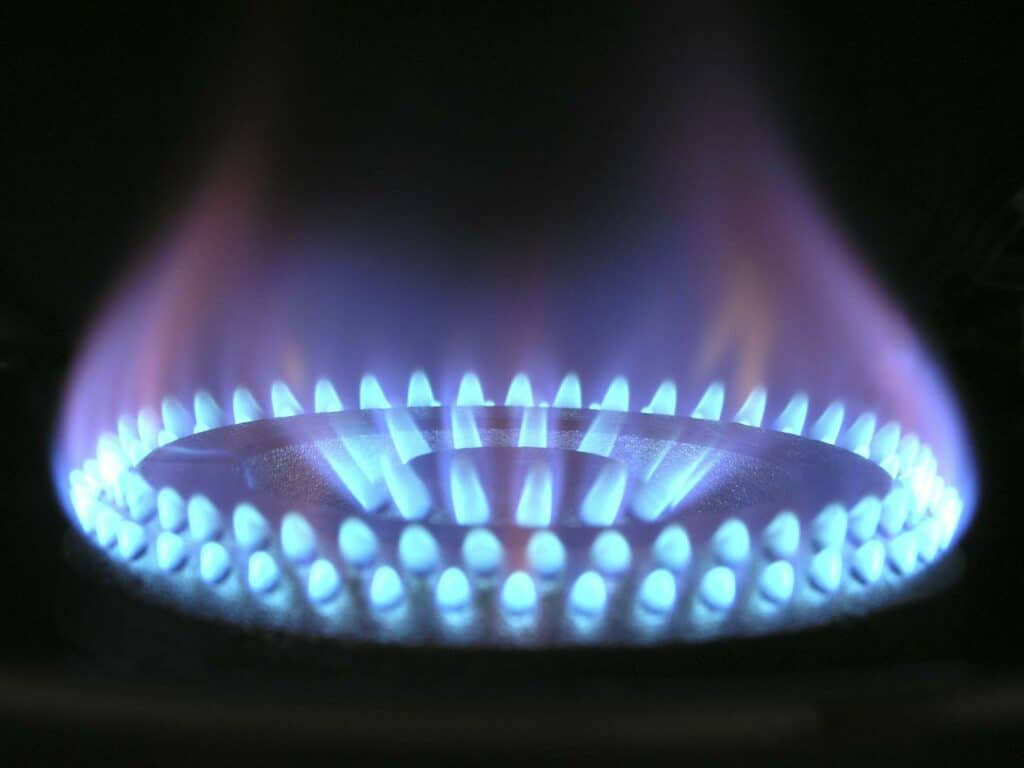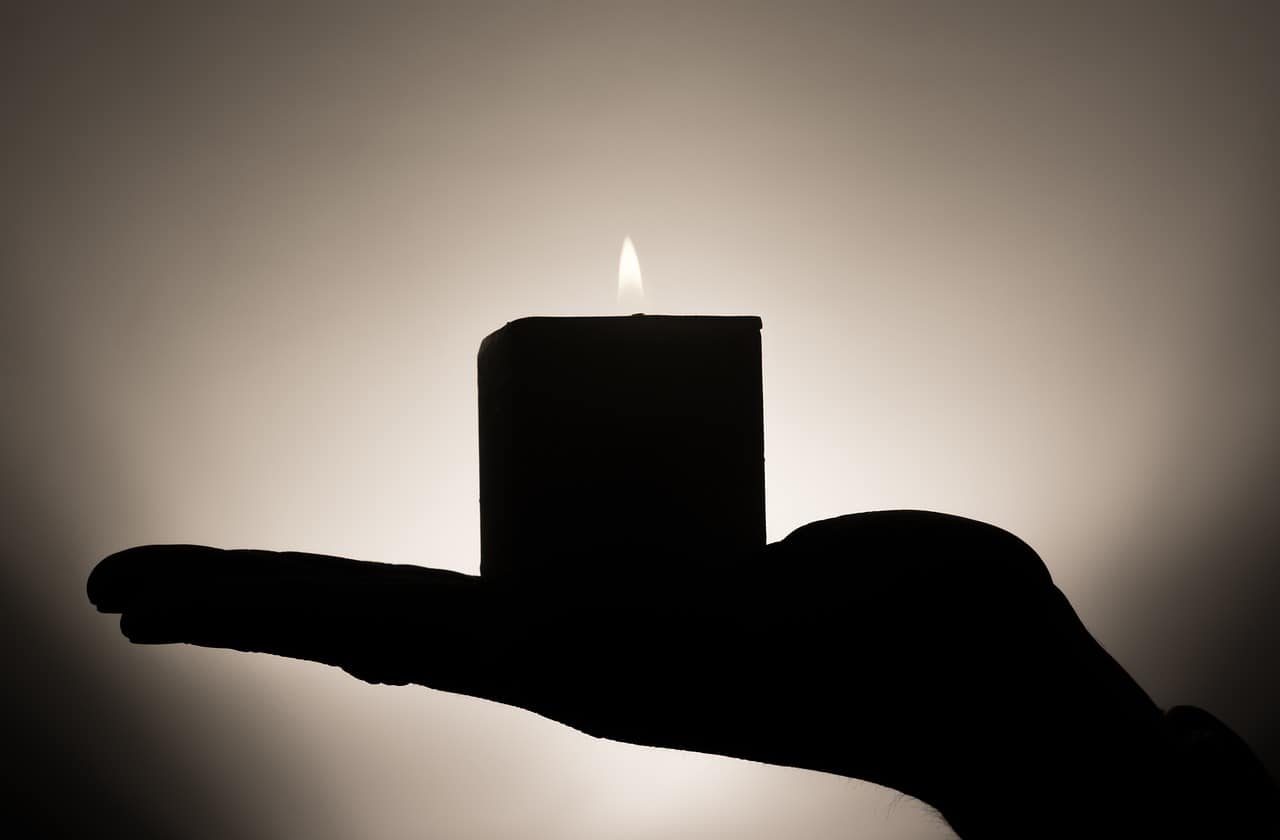When we think of fire, the color that comes to our head is orange or yellow. However, fire is actually made of different flames, each with a distinctive color.
Essentially, fire can span the whole spectrum of visible light, which includes red, orange, red, green, blue, indigo, and violet in that order. However, some of these colors are not always visible for different reasons.
Factors that determine the colors of a flame are the temperature of the flame and the source of energy. As such, the color of a flame correlates with the temperature, as fire usually has a range of different temperatures within it.
The most visible colors in flames are red, yellow, orange, white, and blue. Interestingly, blue is the hottest while red is the coolest on this list. It is interesting because red is often associated with hot, while blue is considered a cool color.

How Hot Is a Blue Flame?
The blue flame burns at 1400⁰C to about 1650⁰C, making it the hottest flame. It is hot because it is the most oxygenated flame and undergoes complete combustion.
In a fully open Bunsen burner, the blue flame burns with a roaring sound because of how powerful it is.
Human discovery of the blue flame marked the onset of the iron age. Humans could use the flame to extract iron by melting brown iron ores.
In essence, the blue flame is hot enough to melt metals and is often used by welders. Still, it is not common to spot the blue flame, especially not in fireplaces or campfires.
How Hot Is the White Flame?
The white flame is right below the blue flame temperature-wise. It burns at temperatures between 1300⁰C and 1500⁰C.
The higher the temperature, the brighter the white. As the temperature approaches 1500⁰C, the white becomes dazzling, almost blinding.
Even though the white flame is not as hot as the blue flame, it is still hot enough to melt some minerals. Some minerals that the white flame can melt include uranium, nickel, and cobalt.
How Hot Is the Yellow Flame?
The yellow flame is one of the most common flames. Chances are high that you have seen a yellow flame multiple times in your home while burning candles or even papers. It is the color of flame that will be produced from burning wood pulp, sugar cane, and sugar.
The yellow flame burns at 1200⁰C. At that level of heat, this flame can melt elements such as radium, arsenic, calcium, and silver.
How Hot Is the Orange Flame?
Orange is the most common flame color. This is because it is the color at which carbon burns, and most organic items are carbon-based. Organic materials include charcoal, firewood, and oil. Hence, it is why most people associate fire with the color orange.
Fire burns with an orange flame at temperatures between 1100⁰C and 1200⁰C. The orange is deep at temperatures close to 1100⁰C and clears out as it approaches 1200⁰C. When all the carbon in the fuel is burnt out, the orange flame starts turning blue.
How Hot Is the Red Flame?
The red flame is found on the outer edge of a fire, furthest from the source of energy. As such, it is the coolest flame and burns at temperatures between 525⁰C and 1000⁰C. Essentially, the fainter the red, the lower the temperature.
At 525⁰C, the red is barely visible. As it gets warmer and closer to the 1000⁰C mark, the red becomes deeper and blends with orange.
While it is the coolest flame, it is still hot enough to melt tin, zinc, and glass. The hottest bit of the red flame can also melt magnesium. Therefore, you may want to steer clear of all flames, including red.
Which Color Flame Is the Hottest?
| Color of Flame | Temperature ( in degrees Celcius) |
| Red | 800 – 1000 |
| Orange | 1100 – 1200 |
| Yellow | 1200 |
| White | 1300 – 1500 |
| Blue | 1400 -1650 |
As we have established, the hottest color flame is the blue flame. At times, when the temperature is high enough, a violet flame can be spotted below the blue flame. In such a case, violet is the hottest flame.
Both blue and violet flames burn at temperatures of about 1650⁰C, which can melt anything. For this reason, blue and violet flames are common in metal factories and welding workshops.
People working with blue and violet flames are advised to wear protective gear, especially goggles when dealing with fire.
The hottest flame is formed when there is adequate oxygen to support complete combustion. It also depends on the source of fuel. For instance, blue and violet flames are mostly produced when you burn metals.
Here is an experiment conducted with a bunsen burner to test different flames:
Can A Fire Have Different Colored Flames at The Same Time?
Yes, a fire can have different flames simultaneously, depending on the source of the fire and the temperature across the fire. Normally, the dominant color of fire will change with the temperature. Therefore, there will be different colors in different positions of the fire.
For instance, in a fireplace, the colors will keep changing from the base of the fire to the edge. While orange will be the dominant color, you will notice other colors at different positions of the fire. For instance, the spot closest to the wood may be blue, while the outer flame will be red.
Typically, the amount of oxygen will determine the heat produced in different positions of the fire. As such, a fire may have flames with colors that span across the light spectrum, beginning from the coldest flame to the hottest one: red, orange, yellow, green, blue, indigo and violet.
Final Thoughts
Fire is a product of combustion between oxygen and a source of fuel. The amount of oxygen present affects the amount of combustion that takes place, which also affects the temperature of the fire.
As such, fire can have different temperatures at certain positions and, in turn, different colored flames. The hottest flame is blue, and it is closest to the base, where proper combustion is taking place.
The coolest flame is red, and it is often found at the outer edge of the fire. Yellow and orange are the most common flame colors. It is vital to keep in mind that fire is dangerous and versatile, so be careful when dealing with it.





